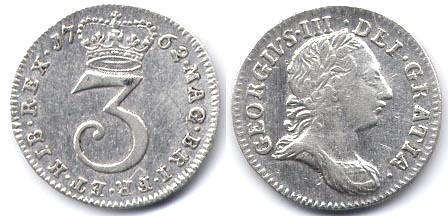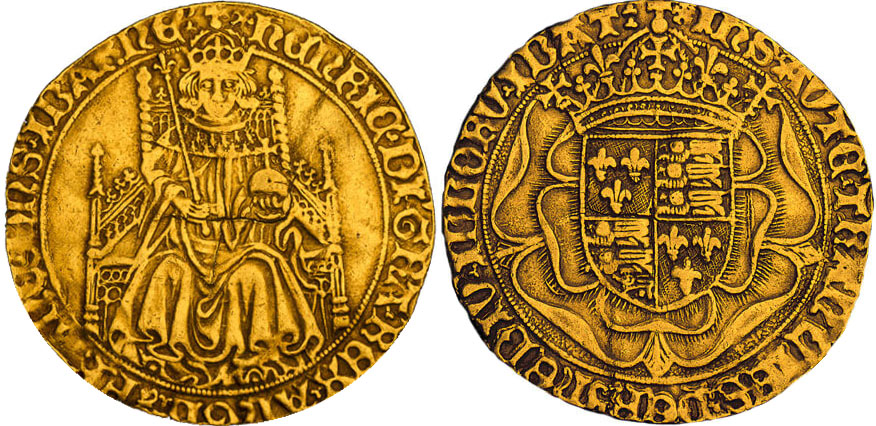Sovereign and guinea - what is the difference and which is bigger
In order to understand what these coins are, we will have to look a little into history.
Many people know that in 1971 Great Britain switched to the decimal number system, including the circulation of money. Many British people were unhappy with the reform because, as they said, now you had to be a math whiz to count out change from 100 pence. The old system was simple and convenient - there were 4 crowns in a pound, 5 shillings or 2.5 florins in a crown, 12 pence in a shilling and 4 farthings in a penny. Judge for yourself how convenient it is :), but indeed, such a system worked for a very long time and everyone got used to it.
But, all these names originally did not denote coin denominations, but simply weight units of precious metal. A pound sterling was really a pound (about 350 grams) of silver. It was inconvenient to operate with such a large unit in calculations and small coins appeared - pennies, which were minted 240 pieces from the pound. Then came the 1/20th of a pound (shilling), etc.
Yes, no one carried a pound of silver in his pocket, of course, because in addition to silver, gold also participated in monetary circulation. In addition to convenience, this caused some problems. The fact that the ratio of the value of silver and gold was constantly changing, and a pound of gold could cost not 20, but for example 21 shillings. It was necessary to issue a gold coin of a smaller weight, and since the old ones were not going anywhere, the profession of a changer was very much in demand. :)
And the denomination designation on coins (and not all of them) appeared only towards the end of the 18th century.

3 pence of George III with denomination designation
Once again - at the time we are talking about, coins were just bars of a certain weight. That is why, by the way, any coins were accepted for payment in any country, not just those minted in that state.
Nevertheless, coins had to be distinguished from each other somehow. At least just to understand what amount of money we are talking about. And they began to call them by characteristic features, for example, by the image on the coin.
Sovereign
The Sovereign is a gold pound, named after the king on the throne (the sovereign). On the other side is a crowned shield with the arms of England and France on a Tudor rose background. The sovereign was first minted in 1489 under Henry VII.

Sovereign. Image from the Royal Mint Museum website
The weight is 240 grans (15.55 g), gold content - 15.47 g (23 carats, or 96%), diameter - 39.5 mm. The cost, as it should be - 20 shillings. However, by 1549 gold had risen in price and the sovereign was worth 22 shillings. In order to maintain the correct value ratio, a new sovereign was issued, containing 10.98 grams of 22 karat gold.
The last sovereign was minted in 1603 or 1604 under James I. From 1604 it was replaced by the Unite with a belted portrait of the king.
After the establishment of the gold standard in 1816, the minting of gold sovereigns resumed, but it was already a coin of a completely different type - with the head of the monarch on one side and St. George slaying the dragon on the other. Sovereign without a sovereign. :)
Its weight was already only 7.98 g.
Guinea
The guinea is also a gold coin with an original value of 20 shillings, which is essentially the same as the pound. It got its name from the origin of the gold (from Guinea).
The first guinea minted in 1663 under Charles II and immediately received the status of the main gold coin of the kingdom. The obverse shows a bust of the king, on the reverse, in the form of a cross between two crossed scepters, the coats of arms of England, Scotland, Ireland and France (because at that time the king of Great Britain still considered himself and the king of France).

Guinea. Image from the Royal Mint Museum website
At first the characteristic feature of the guinea was the symbol of an African elephant under the portrait of the king, but later other icons were used.
The guinea was the first British gold coin to be machine minted.
Its value fluctuated wildly, even reaching 30 shillings until it was officially set at 21 shillings in 1799. Note, not 20 as for the sovereign, as the Guinean gold was more pure.
In 1817, the minting of the guinea ceased and the gold sovereign returned in its place in a new guise. But the guinea continued to be used as a unit of account worth 21 shillings until decimal reform. Despite the absence of the coin itself, prices for expensive goods were sometimes quoted in guineas.
Still - are the sovereign and the guinea the same thing or not?
Yes and no. Nothing is definite in this world. :)
On the one hand - and sovereign and guinea is a material embodiment of the pound sterling, that is, coins as if the same denomination and relatively the same value.
On the other hand - they are completely different coins, nothing like each other.
As an analogy - can a Susan B. Anthony dollar and a Sacagaweadollar be considered the same coin?

